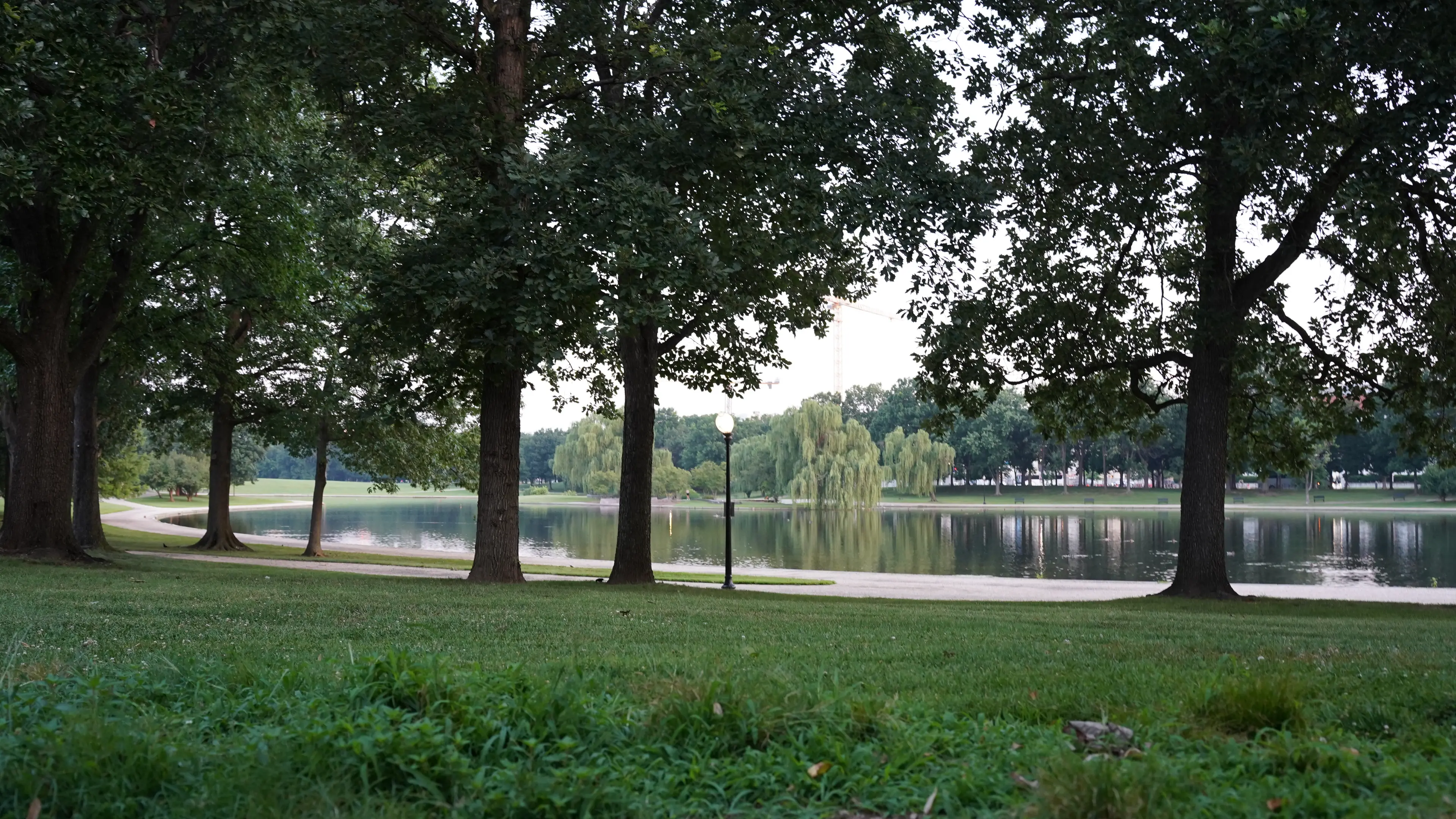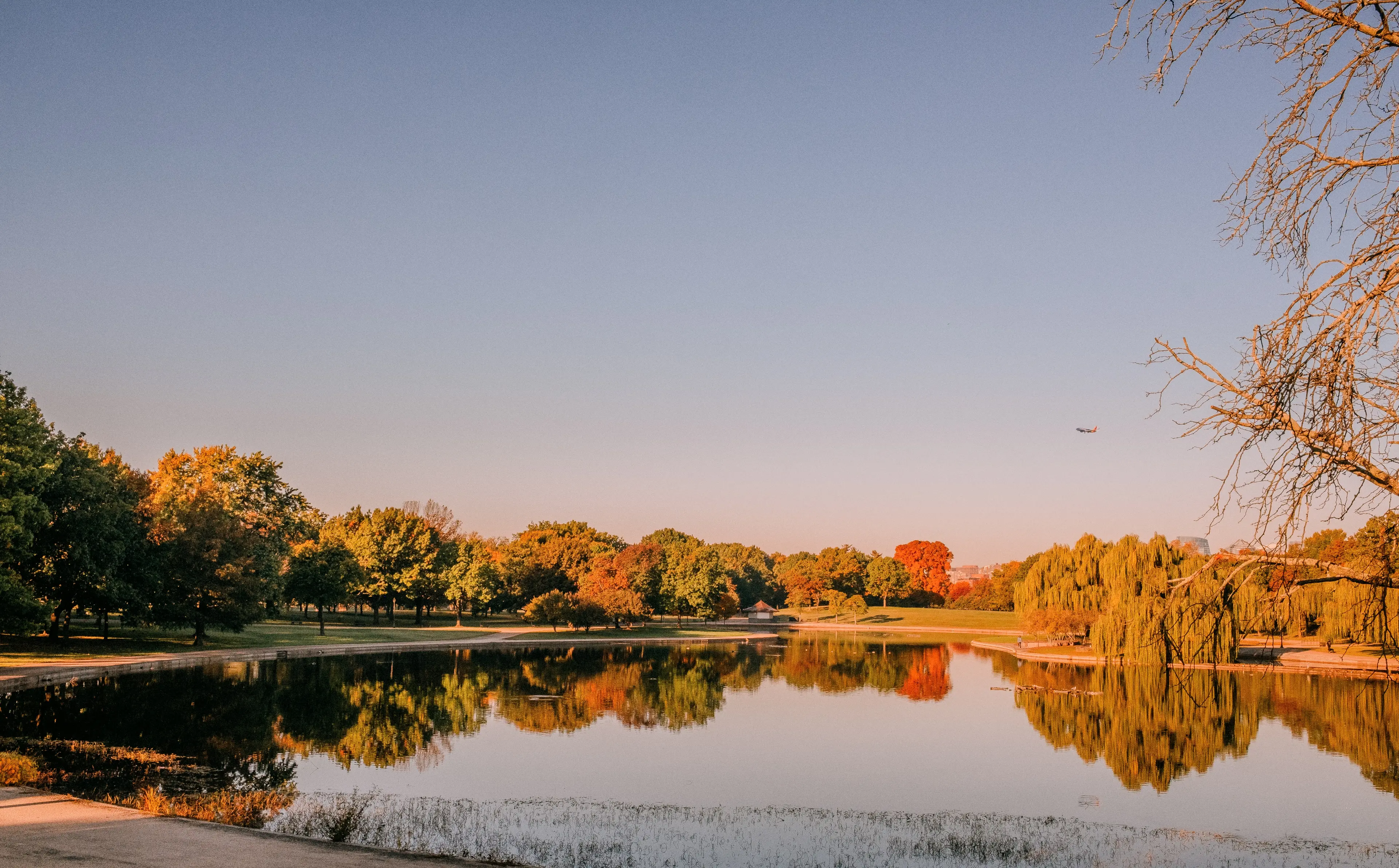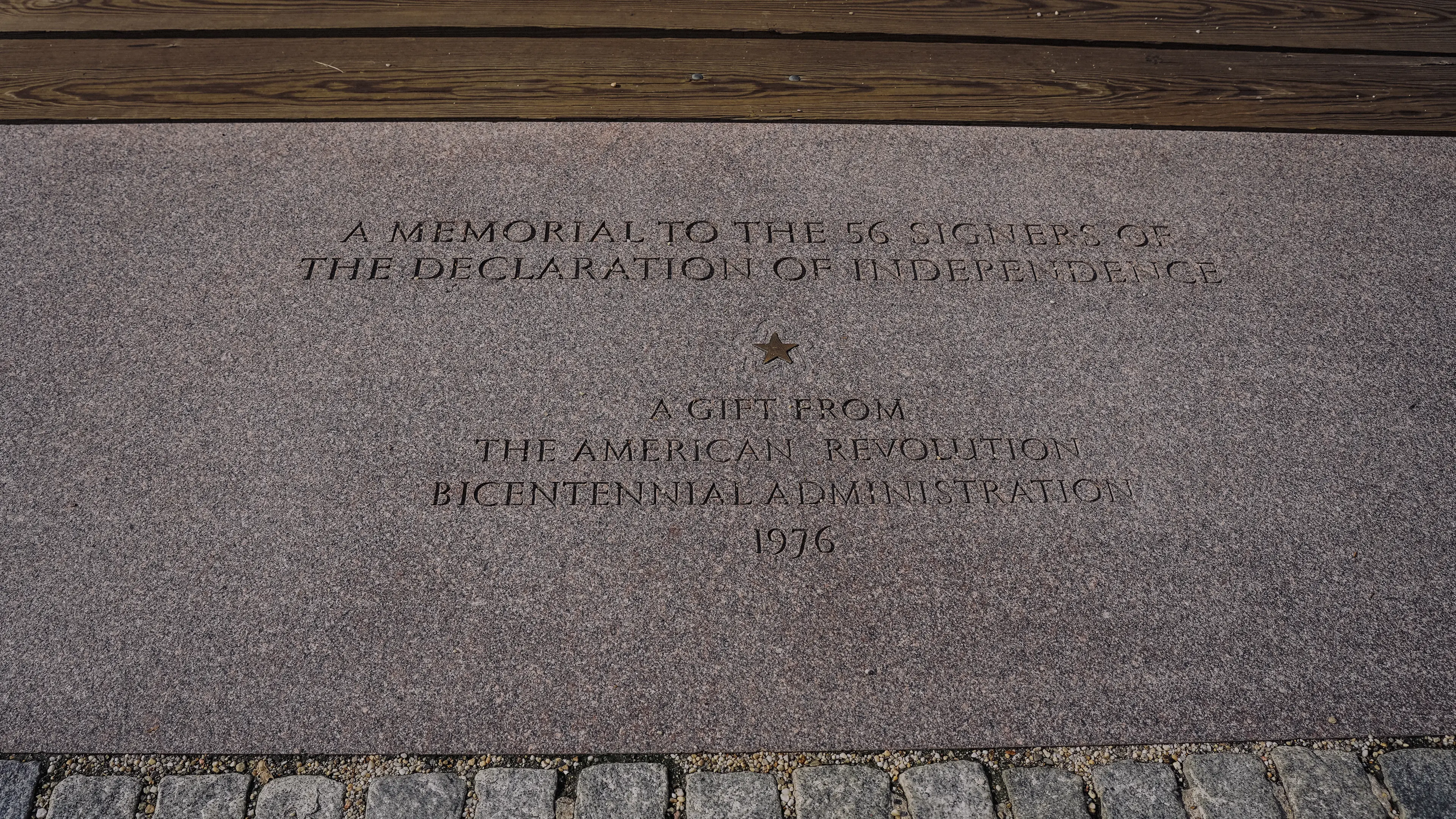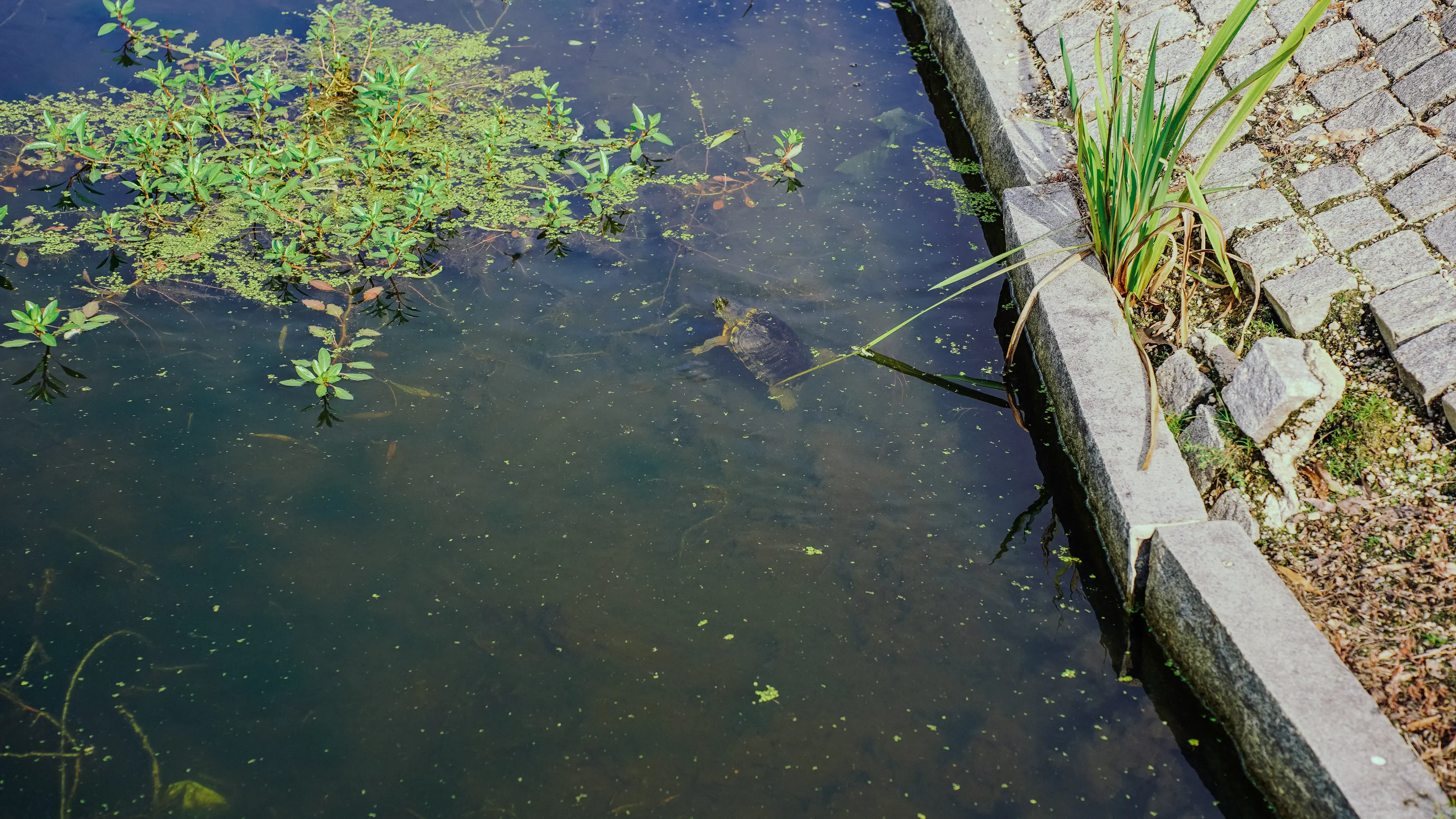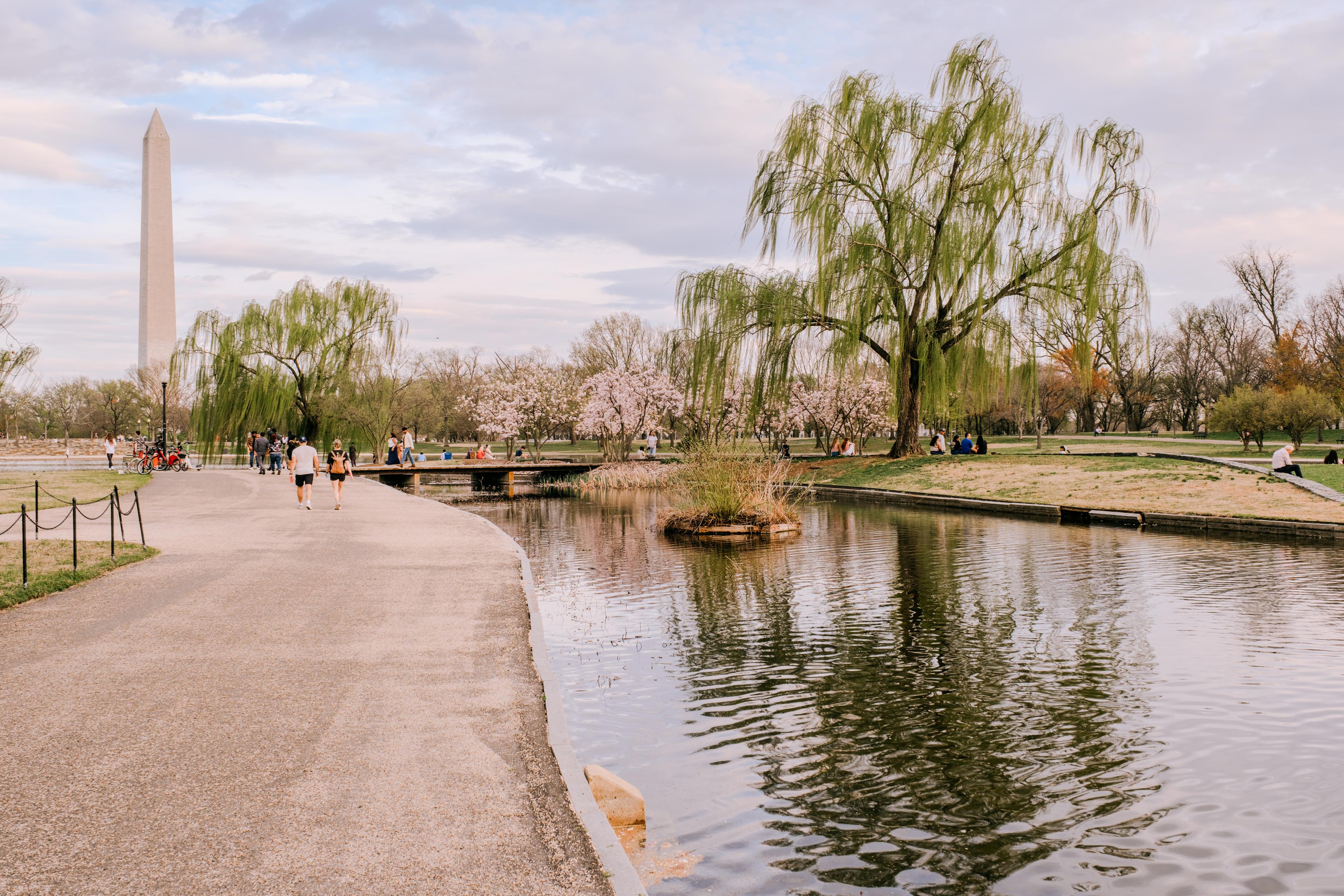
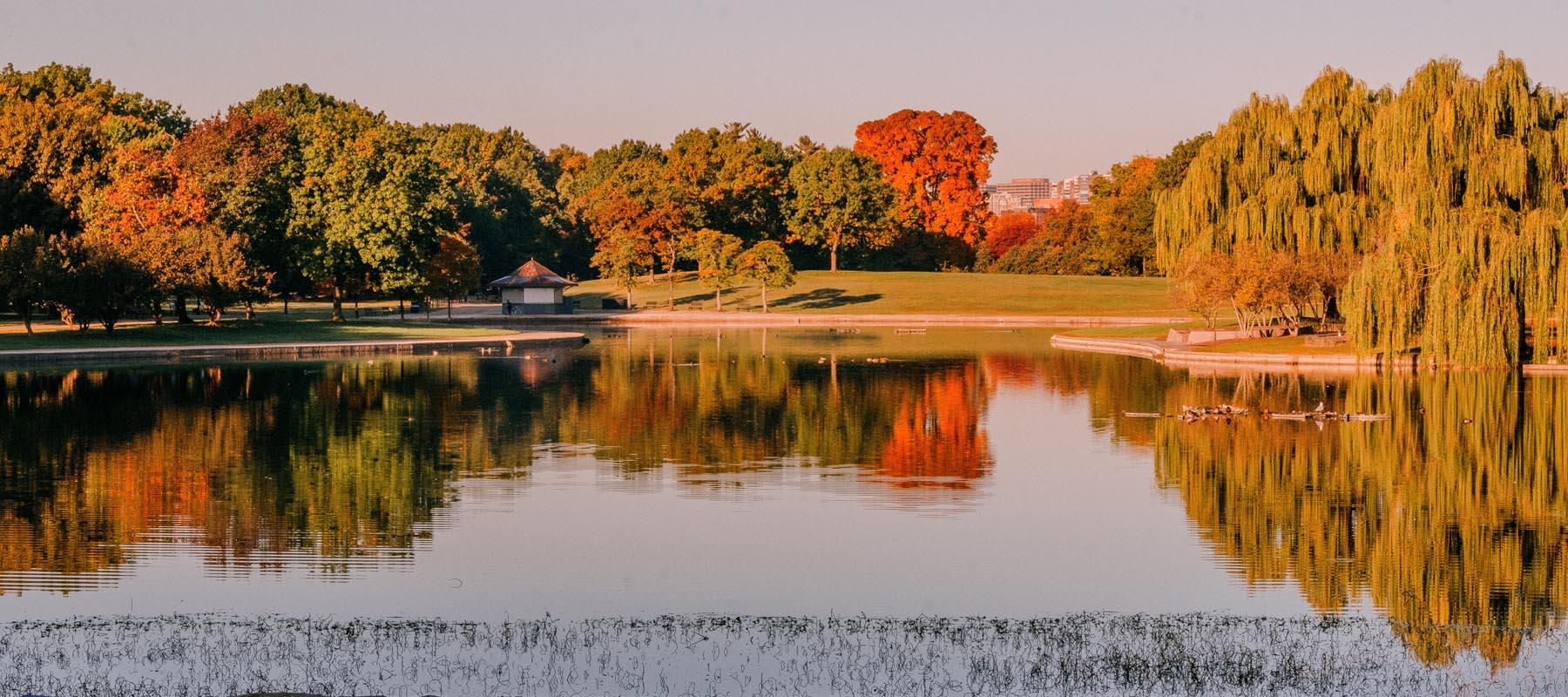
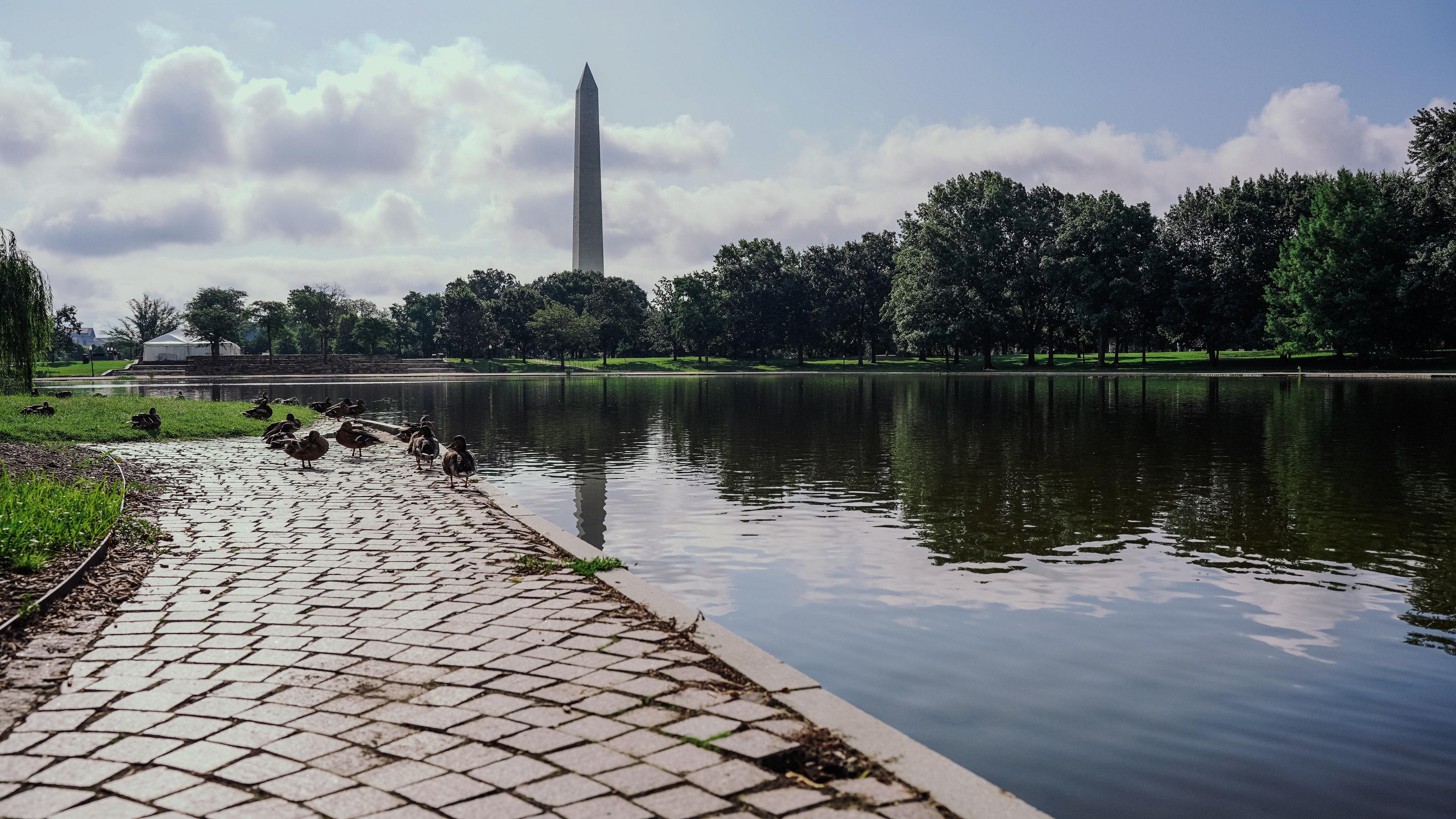
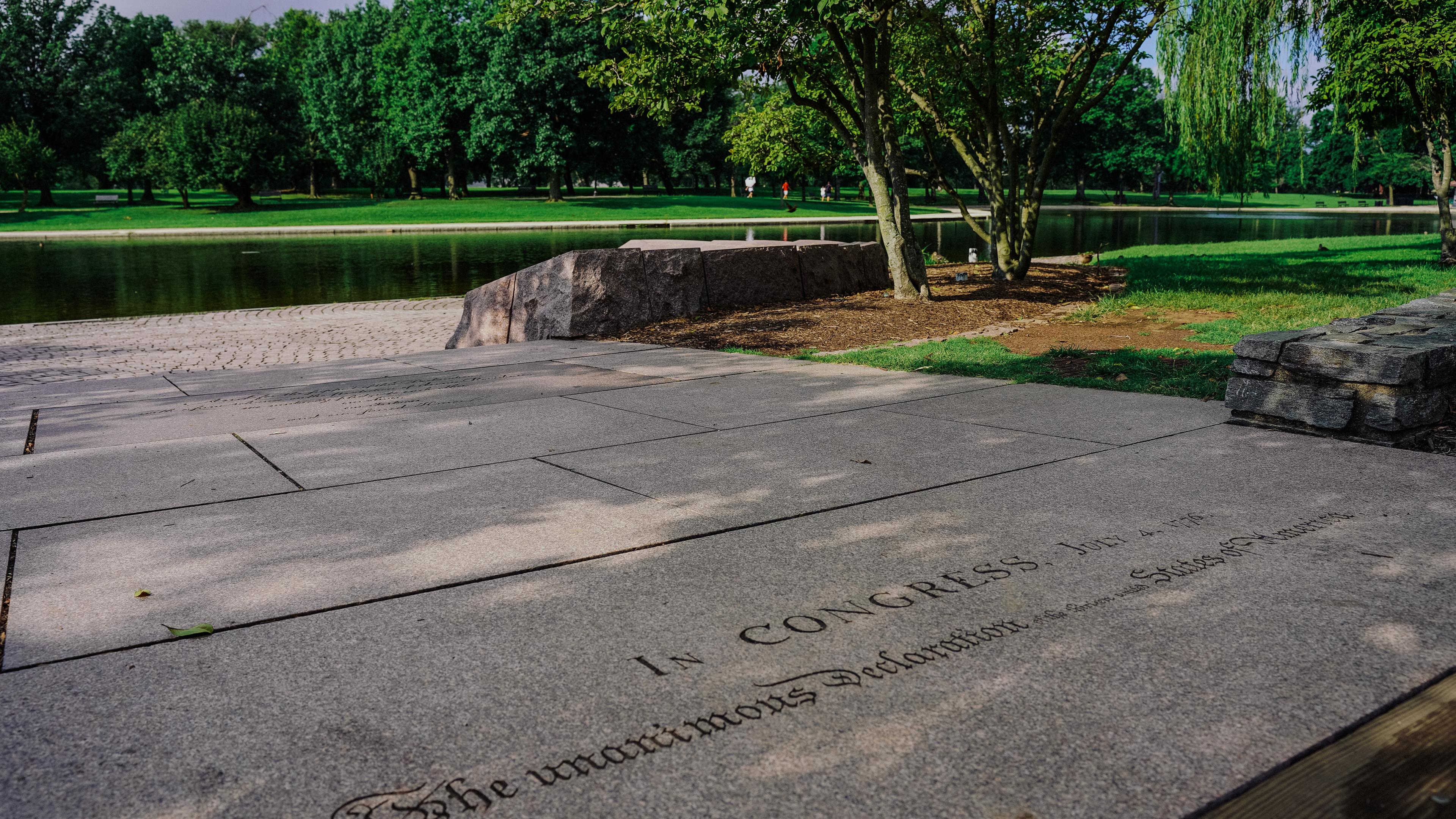
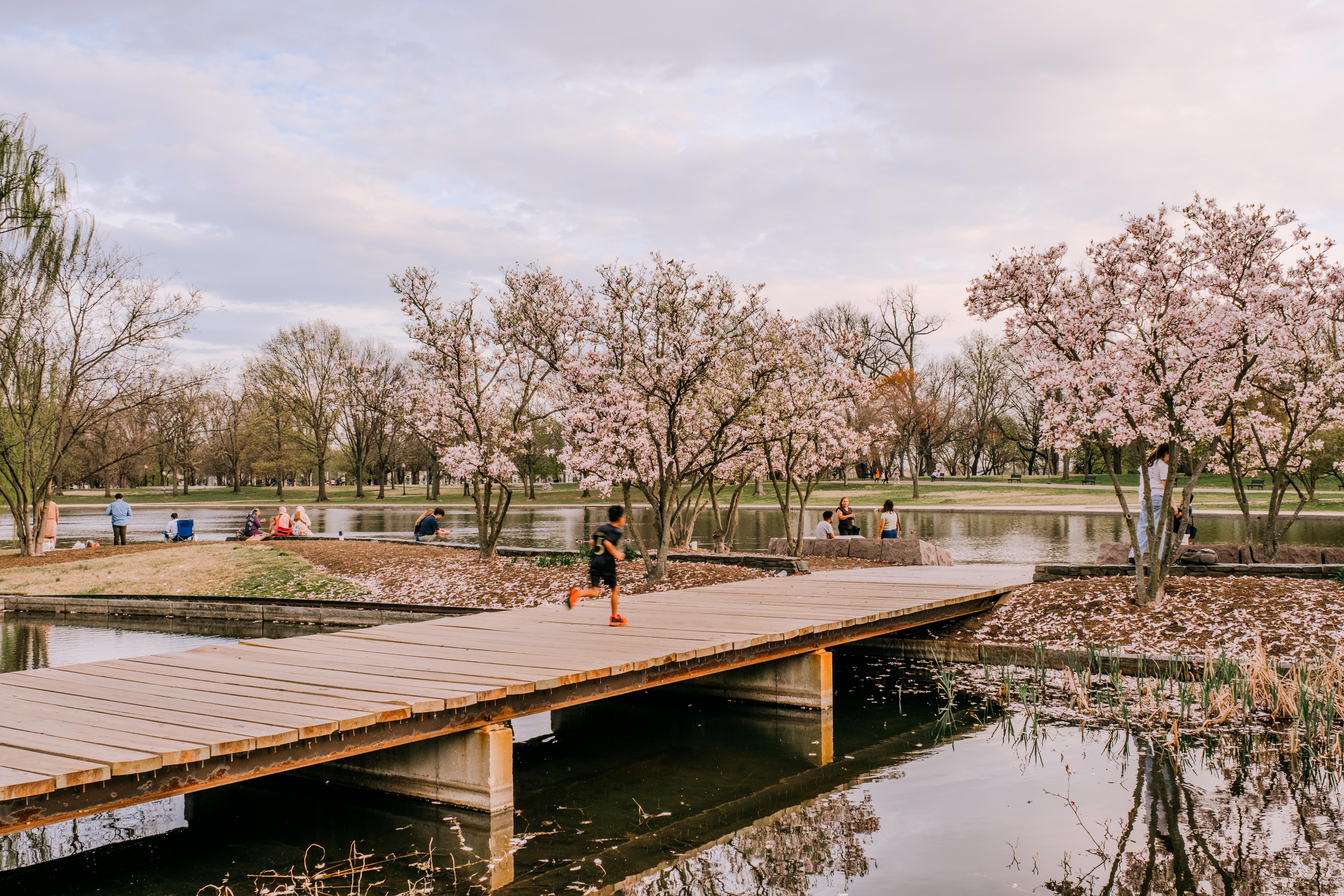
Constitution Gardens
1850 Constitution Ave. NW, Washington, D.C.
Amenities
- Wheelchair accessible
- Open 24 hours
- Food & drink — Near Vietnam Veterans Memorial
- Restrooms — Available near southwest corner of Constitution Gardens Pond, towards the Vietnam Women's Memorial and Reflecting Pool. Daytime hours vary
During the government shutdown, open-air Memorials will generally remain accessible to visitors. Restrooms, bookstores, gift shops, and information kiosk services may be suspended. For more information, please visit: doi.gov/shutdown.
Constitution Gardens is a fifty-acre formal park with a 6.5-acre artificial lake located on the south side of Constitution Avenue NW between 17th Street NW and Henry Bacon Drive NW.
The land for the gardens was originally reclaimed from the Potomac River in the late-nineteenth century. Temporary office buildings stood there during World War I and II—the last of which were torn down in 1971. The following year, President Richard Nixon announced the creation of a formal park to commemorate events related to the American Revolution and the founding of the Republic.
Construction then began in 1974, and the designers (Skidmore, Owing and Merrill Inc.) worked hard to ensure that the space offered a reflective setting that complemented nearby presidential memorials.
On September 17, 1986, President Ronald Reagan issued a proclamation in honor of the Bicentennial of the United States Constitution—making the park a living legacy that honors our Nation’s Constitution.

Take a virtual stroll through this National Mall site
History
Timeline of events
The Washington City Canal, built along the route of Tiber Creek from the Potomac River on the north side of the Mall to the Anacostia River near Navy Yard, opened to traffic.
The ‘Washington Branch’ extension of the C&O Canal extends its eastern terminus a mile and a half further from Georgetown, connecting with the western terminus of the Washington City Canal at the mouth of the Tiber Creek.
Sometime between 1831-1837, depending on sources, the C&O Canal Company constructs a two and a half story stone house to serve as the gate house and quarters for the lockkeeper for the canal lock connecting the C&O Canal and the Washington City Canal.
By the 1850s, due to increased reliance on rail transportation for goods, the Civil War, and the use of the canal as a sewage and storm drain, the Washington City Canal fell into disuse and disrepair. Because of siltation and odors, portions of the Washington City Canal were covered over and others filled in. The height of the Lockkeeper's House was reduced to one-and-a-half stories.
The Army Corps of Engineers conduct several land reclamation projects on the Potomac River and as a by-product of dredging, the area that is the National Mall is extended west of the Washington Monument.
B Street North (now Constitution Avenue) was built on top of the main length of the covered and filled-in Washington City Canal between 15th Street and Virginia Ave NW. This leaves the Lockkeepers’ House at the southwest corner of the intersection at B Street North and 17th Street.
B Street NW extended through the newly created West Potomac Park between Virginia Ave. NW and 23rd St. NW.
On the suggestion of Assistant Secretary of the Navy Franklin Delano Roosevelt, the federal government built two large temporary structures, the Main Navy and Munitions Buildings, on the Constitution Gardens site along the southern side of B Street between 17th and 21st Streets.
President Herbert Hoover signs into law a public resolution renaming B Street North as Constitution Avenue.
During WWII, more temporary buildings were built just south of the Navy and Munitions Buildings (buildings “Tempo W” and “Tempo N”). Elevated pedestrian bridges were constructed across the Reflecting Pool to join them with temporary buildings on the opposite side (Tempos I, J, K, and L).
President Richard Nixon announces that the Navy and Munitions buildings would be demolished.
The Navy and Munitions buildings are demolished.
President Richard Nixon announces the creation of a formal park to pay tribute to the American Revolution and founding of the Republic.
Construction of Constitution Gardens officially begins with designers Skidmore, Owings, and Merrill, Inc. at the helm.
Constitution Gardens is dedicated as an American Revolution Bicentennial Project.
Constitution Gardens is officially dedicated.
The Vietnam Veterans Memorial is added to Constitution Gardens.
The 56 Signers of the Declaration of Independence Memorial is dedicated, 208 years after the Continental Congress voted in favor of independence.
President Ronald Reagan issues a proclamation in honor of the bicentennial anniversary of the United States Constitution, designating the gardens as a living legacy dedicated to the commemoration of the United States Constitution.
The World War II Memorial is constructed; part of the Memorial’s landscape lies within the Constitution Gardens area (Garden of Remembrance).
Restoration projects begin on Constitution Gardens in preparation for the semiquincentennial.
Key Features
Constitution Gardens is a park meant for commemorating our Nation’s presidents, honoring war veterans and celebrating the United States’ commitment to freedom.
The park boasts impressive features, including:
Reflection Questions
High school learners: Our nation’s past is complex and often provokes reflection, especially as we look to the future.
Here are a few questions to inspire deeper thinking:
- How does Constitution Gardens serve as a living legacy dedicated to the commemoration of the United States Constitution?
- What did the 56 signers of the Declaration of Independence risk by signing the document?
- Why are the Declaration of Independence and the United States Constitution considered the two most important documents in the country's history?
Educational Activities
Other Resources
Interested in learning more? The following links will provide you with additional context and information:
- Trust for the National Mall: Constitution Gardens
- Trust for the National Mall: Restoration Efforts
- National Park Service: Constitution Gardens
- National Park Service: Constitution Gardens Cultural Landscape
- National Park Service: Fishing at the National Mall
- District of Columbia Department of Energy & Environment: Fishing Licensing and Regulation
